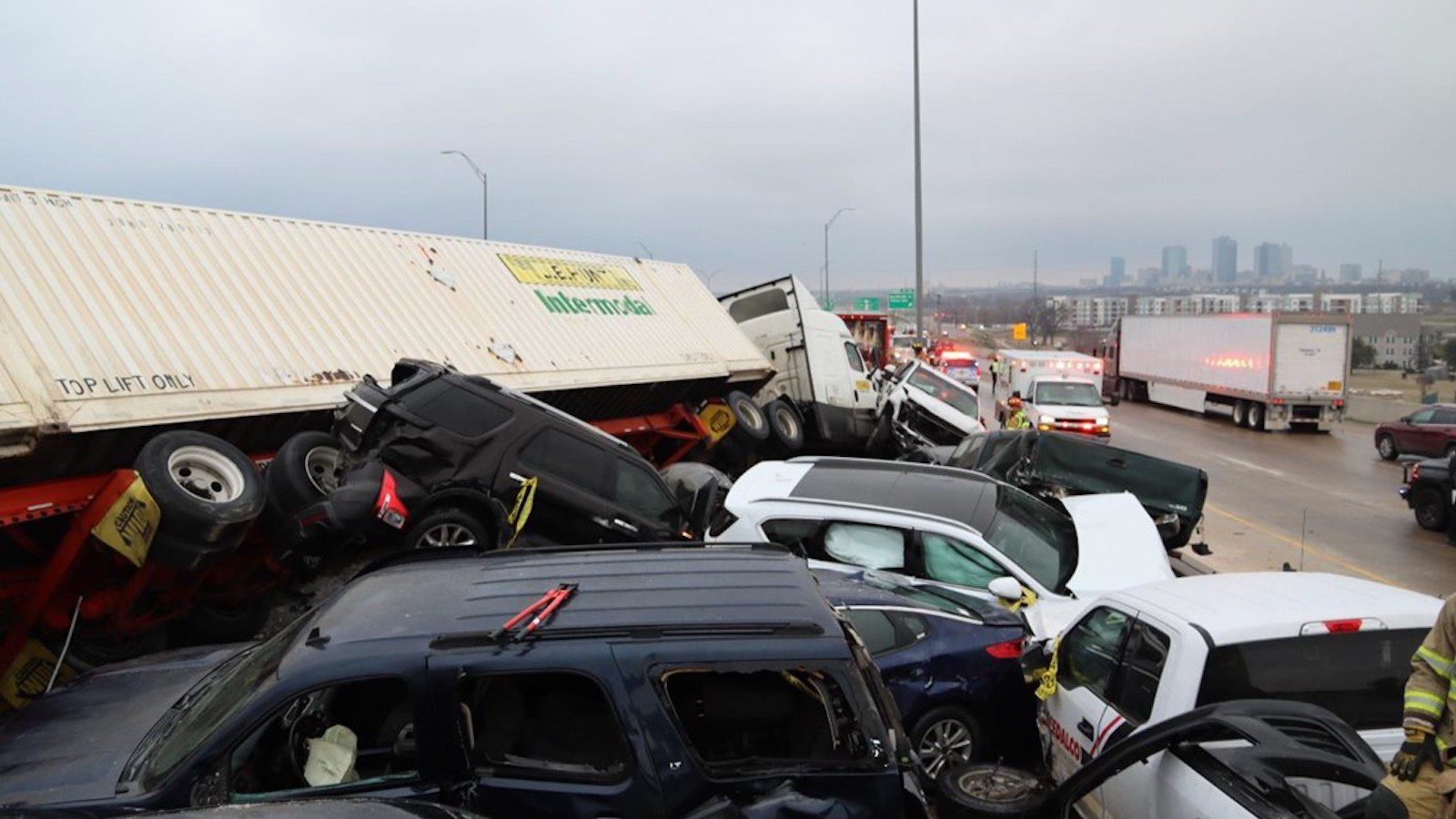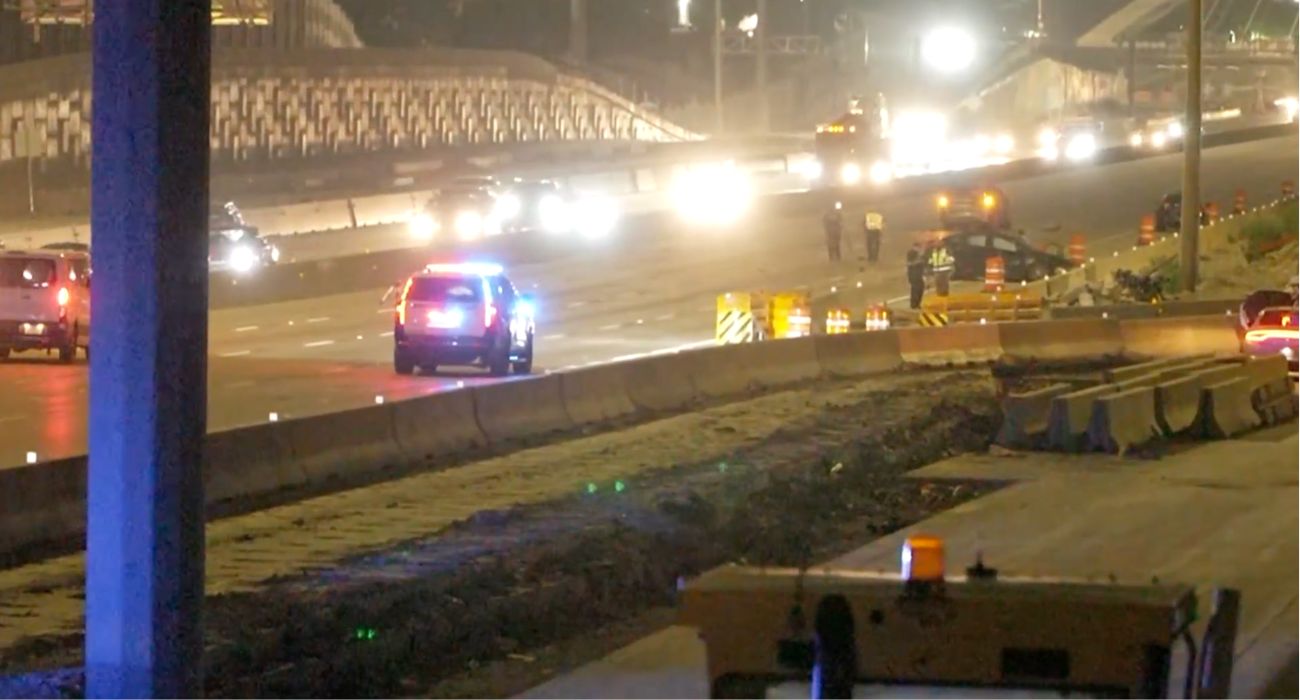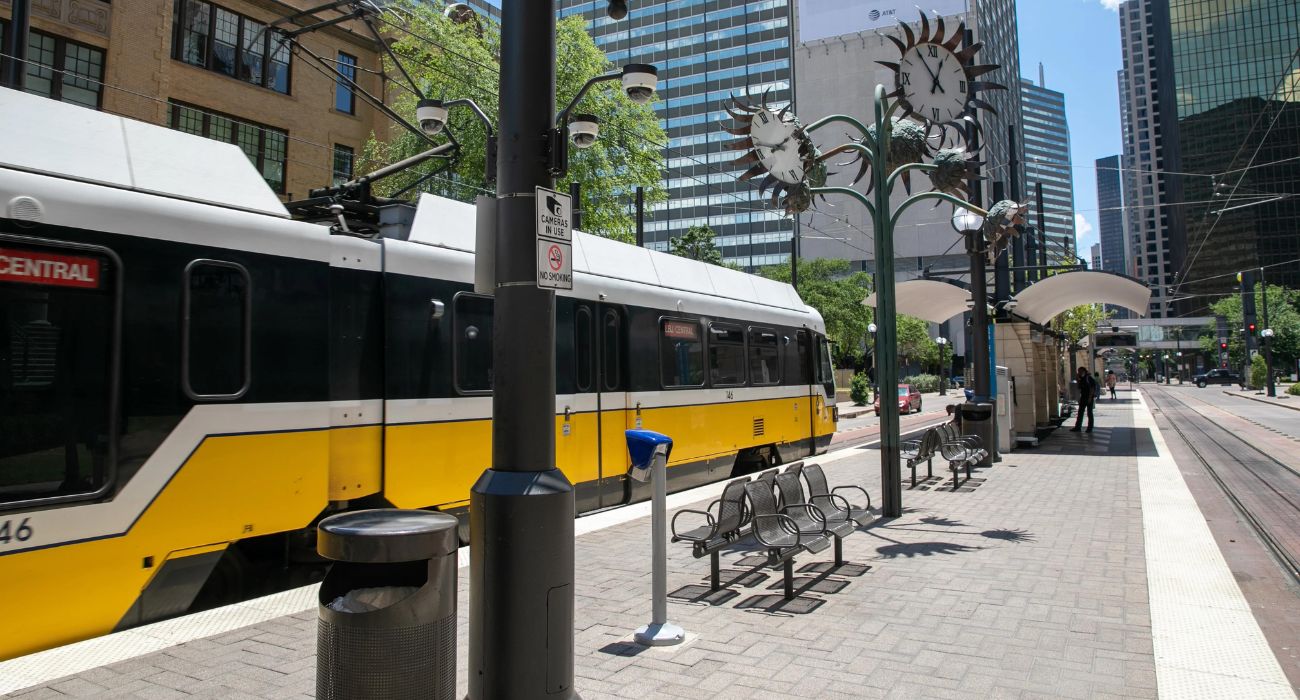New information released brings insight into what may have contributed to the colossal 133-car pile-up that occurred in Tarrant County in 2021.
The icy crash happened at about 6 a.m. on February 11, 2021, in the southbound toll lanes of Interstate 35 West (I-35W). It resulted in 42 injuries, six of which were fatal.
Almost two years later, the National Transportation Safety Board (NTSB) released a 1,465-page docket, giving the public access to the facts, legal transcripts, and summaries of the accident.
Since NTEMP S3 is responsible for the operation and care of I-35W, the NTSB’s investigation focused largely on the road treatment strategies used to address icy roads.
The report said that NTEMP S3 applied a brine solution to the road 44 hours prior to the accident in response to an expected freeze hitting the region.
The preliminary report confirmed that about four hours before the crash, Fort Worth Meacham International Airport reported “light freezing rain and freezing mist” about three miles from where the accident happened.
Signs were displayed indicating “ICY CONDITIONS EXIST / PLEASE USE CAUTION” along the southbound toll lanes, warning drivers of the potentially unsafe conditions. This was prompted by a crash occurring at about 3 a.m. due to icy conditions at I-35W and Western Center Boulevard, about five miles from where the massive crash would take place, according to the summary report.
In witness statements taken by investigators, Fort Worth police Sgt. Richard Camacho explained that he had been in charge of Charlie District where the crash happened. While the initial call alerting him to the crash reported that only about 47 vehicles were involved, that still got his attention.
Of course, the pile-up quickly grew and by the last collision, the accident had blocked 1,100 feet of the interstate and 133 cars were involved.
“The road was slick … it’s like being on an ice rink,” Camacho told investigators, adding that drivers and officers alike were struggling to walk without falling.
Matthew Brown, an engineer with the Fort Worth Fire Department, was actually on the scene as a witness to both accidents, the first occurring at about 3 a.m. and the big one at 6 a.m.
After the PD shut down the interstate to prevent other cars from being hit following the first accident, Brown confirmed that a supervisor had inquired about taking proper precautions to ensure the icy road was safe.
“Some supervisor came over and said, hey, while you all got the highway shut down, do you mind if we sand it? We’re like, oh, it would have been good if you sanded it before, but yes, it’s slick. Please sand it while we have it closed,” said Brown in his witness statement.
Later he described his experience driving up to the site of the second crash, telling investigators that the truck was fishtailing despite going “35 and 40 at most.”
While the road was clearly icy, another contributing factor to the massive collision was that some people were not driving at appropriate speeds in light of the conditions.
The speed limit on the I-35W toll lanes is 75 mph yet road sensors picked up average speeds of 65 mph in the right lane and 82 in the left lane about 15 minutes before the pile-up.
Speeds in the left lane actually bumped up a few minutes later — reaching an average of 103 mph between 5:59 and 6:01 a.m. — with the report not providing any insight into why this might have occurred.
While the released docket does present the facts collected by investigators, the report does not draw a firm conclusion about the cause of the fatal accident.
A final report from the NTSB is expected by this spring that will take a more analytical approach to the crash and make recommendations to prevent it from happening again.







People need to slow down.
Said the truck was fishtailing at ONLY 35-40mph. Once when I was 21 y/o, the road was so slick, my car would start sliding if I got above 20mph on LBJ About 10 years ago, Dallas had ice in mid March. Dallas obviously did not sand R.L. Thornton that day. Just before the Ferguson curve, traffic completely stopped. My car would start sliding just taking my foot off the brake, much less accelerating. Driving on wintry roads is NOT something you get good at. SLOW DOWN, PEOPLE!
Your insight is astounding and the anecdote, life altering. Thank you.